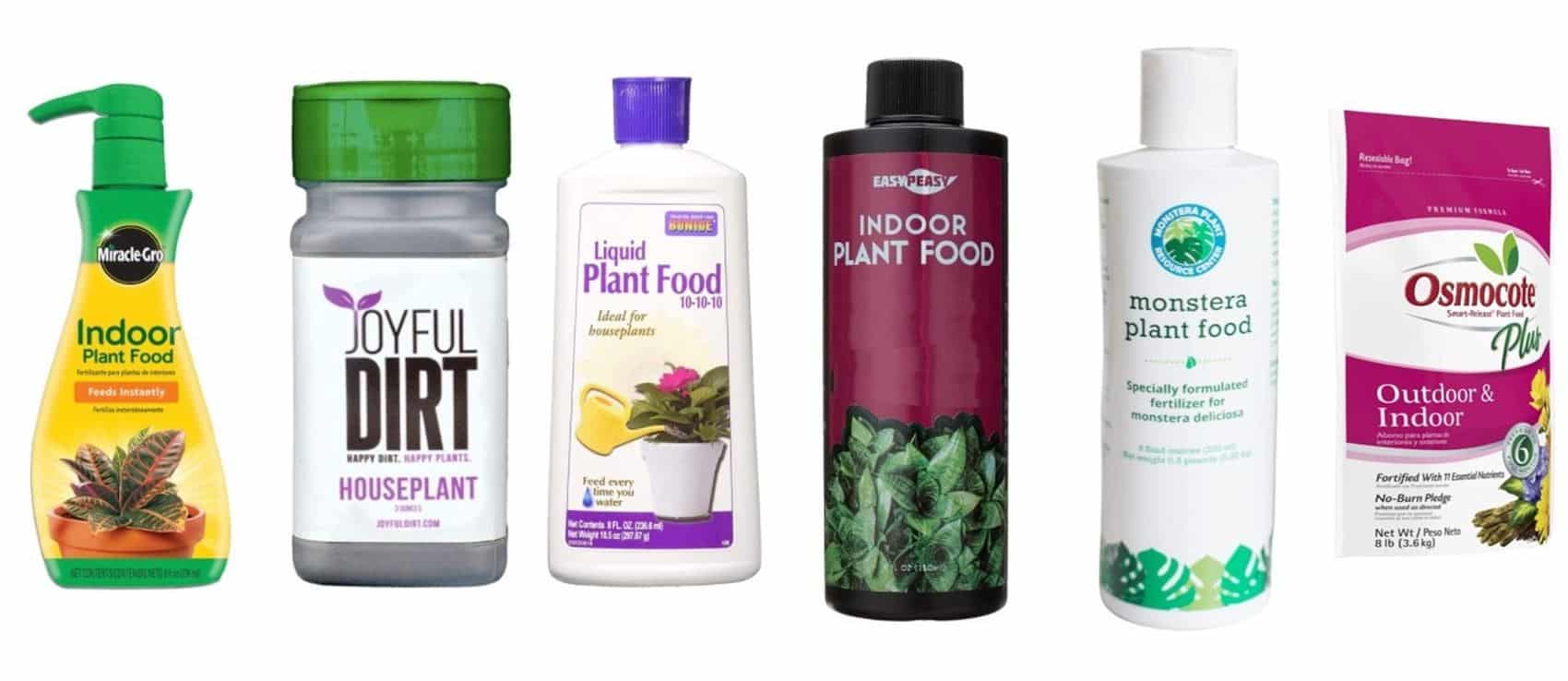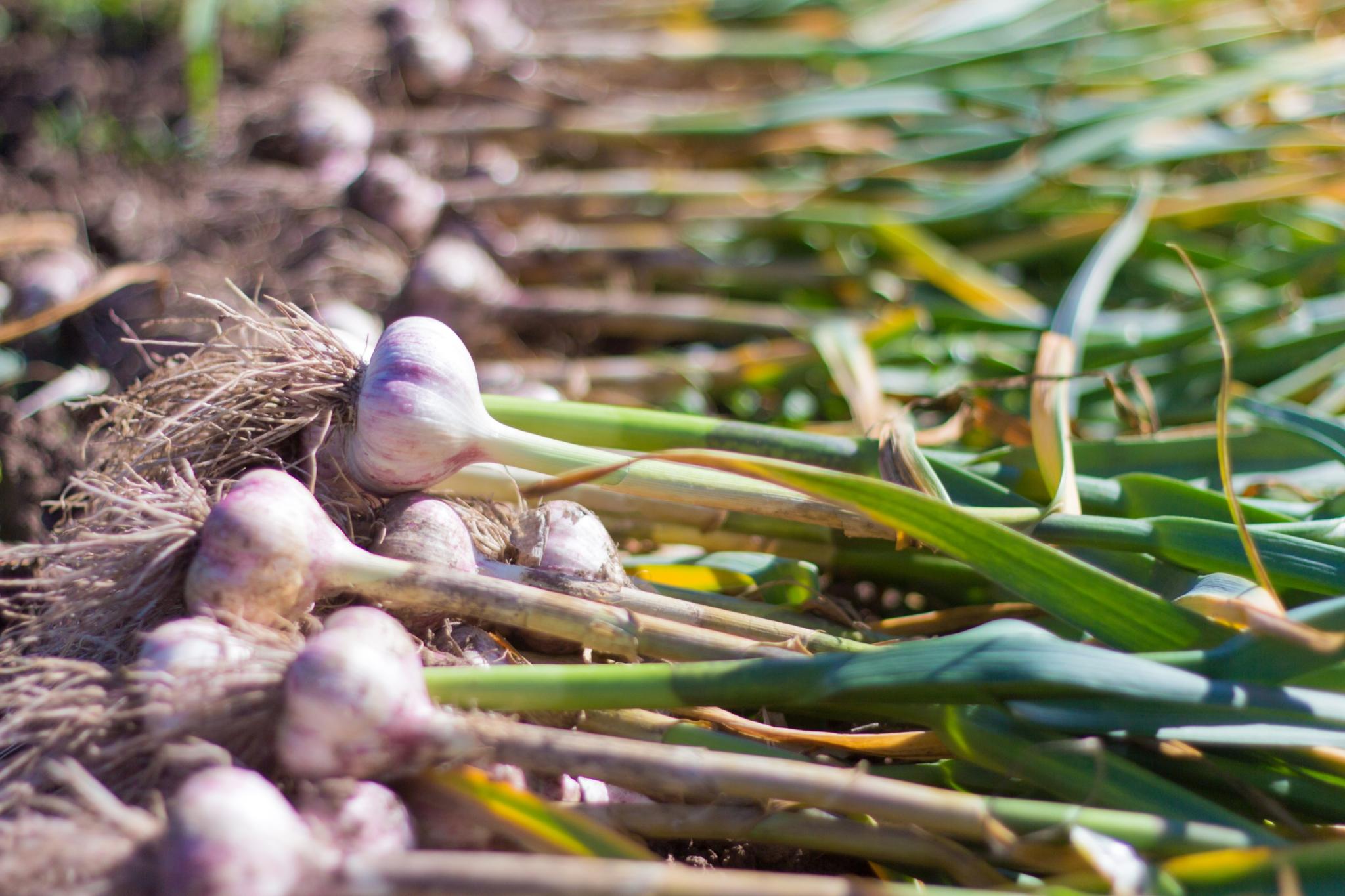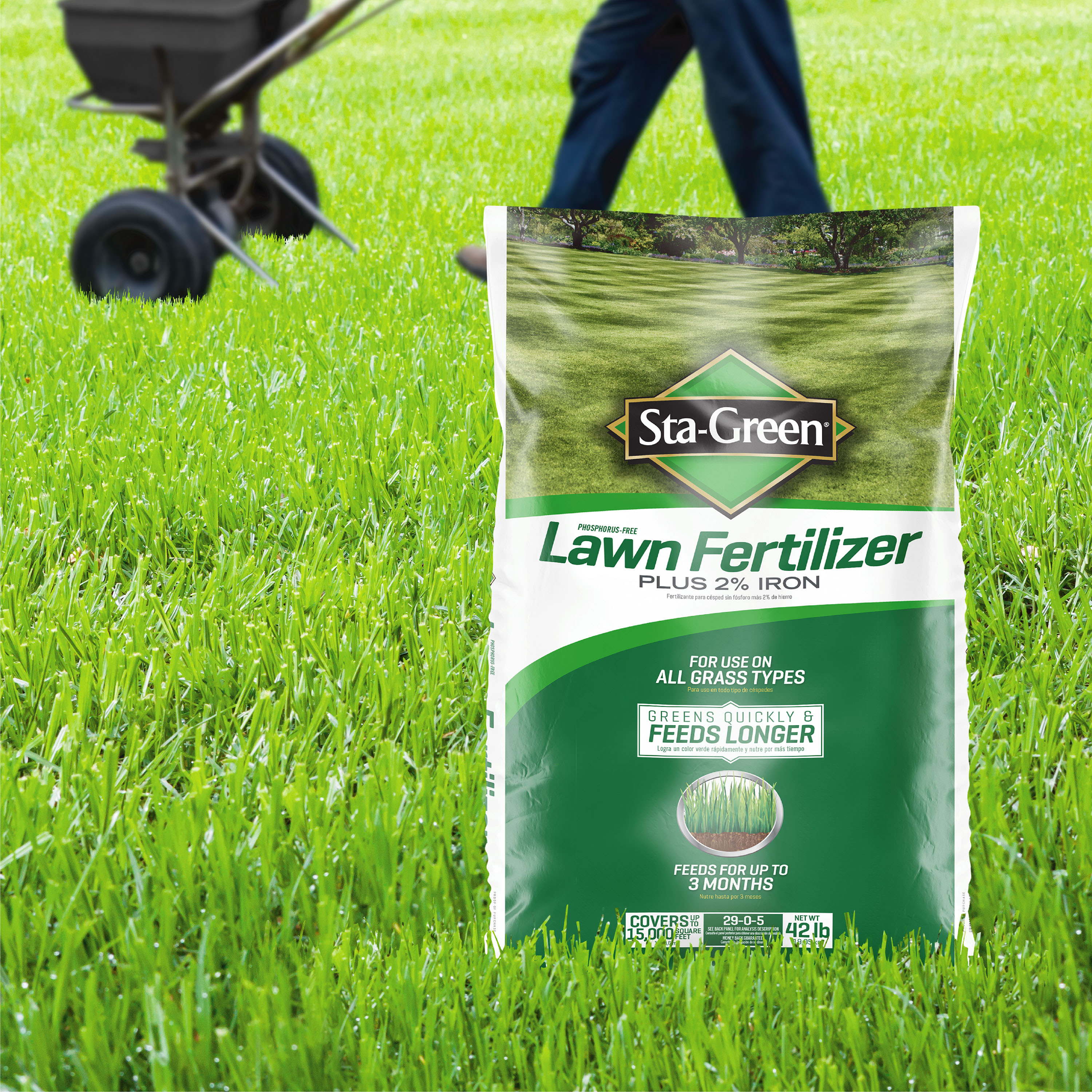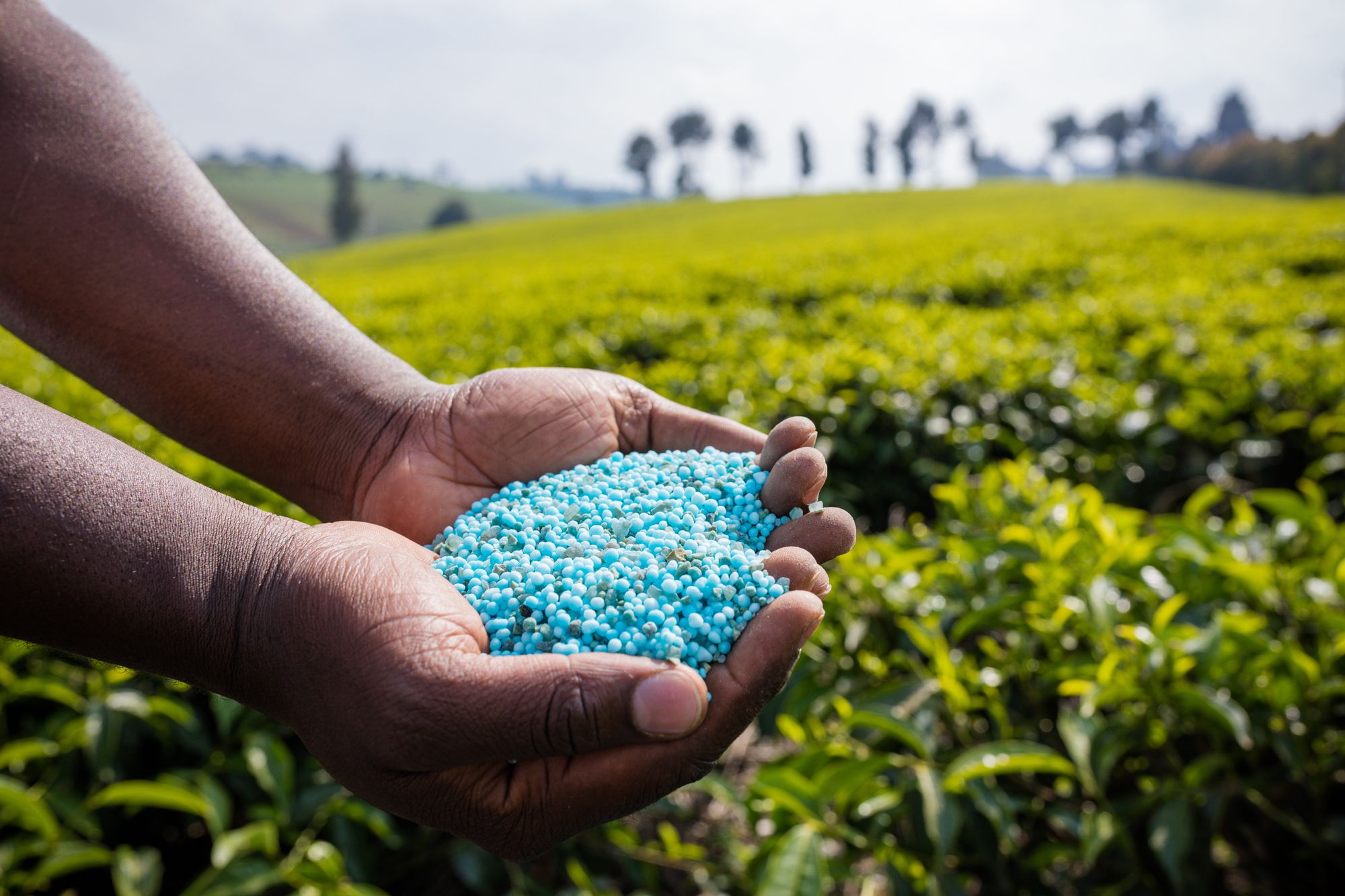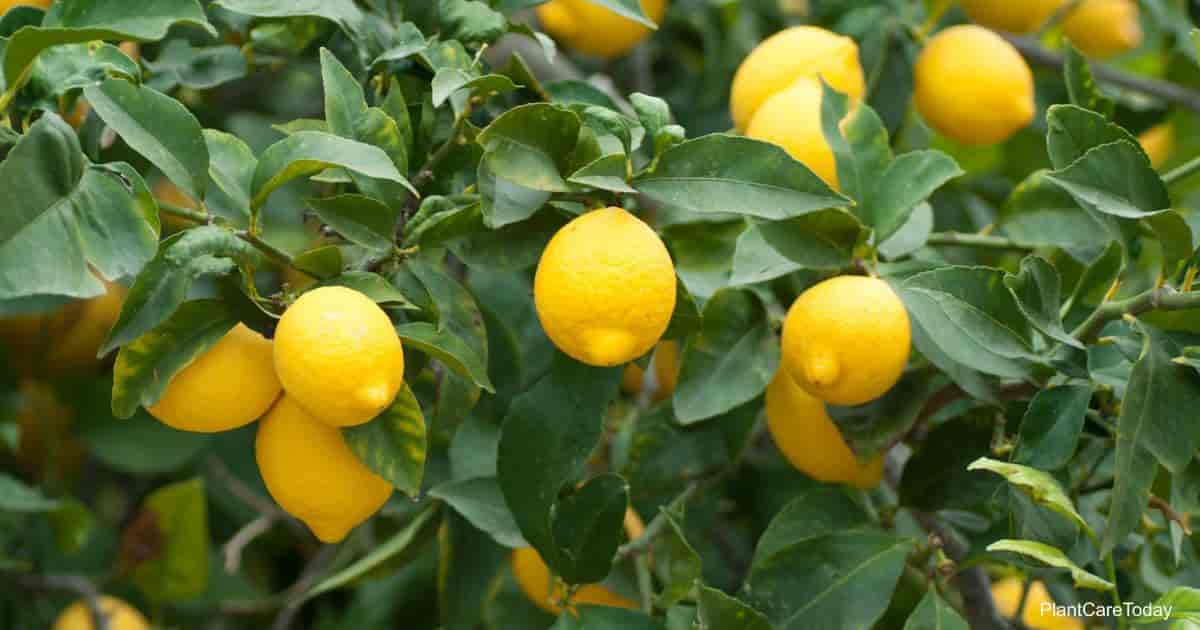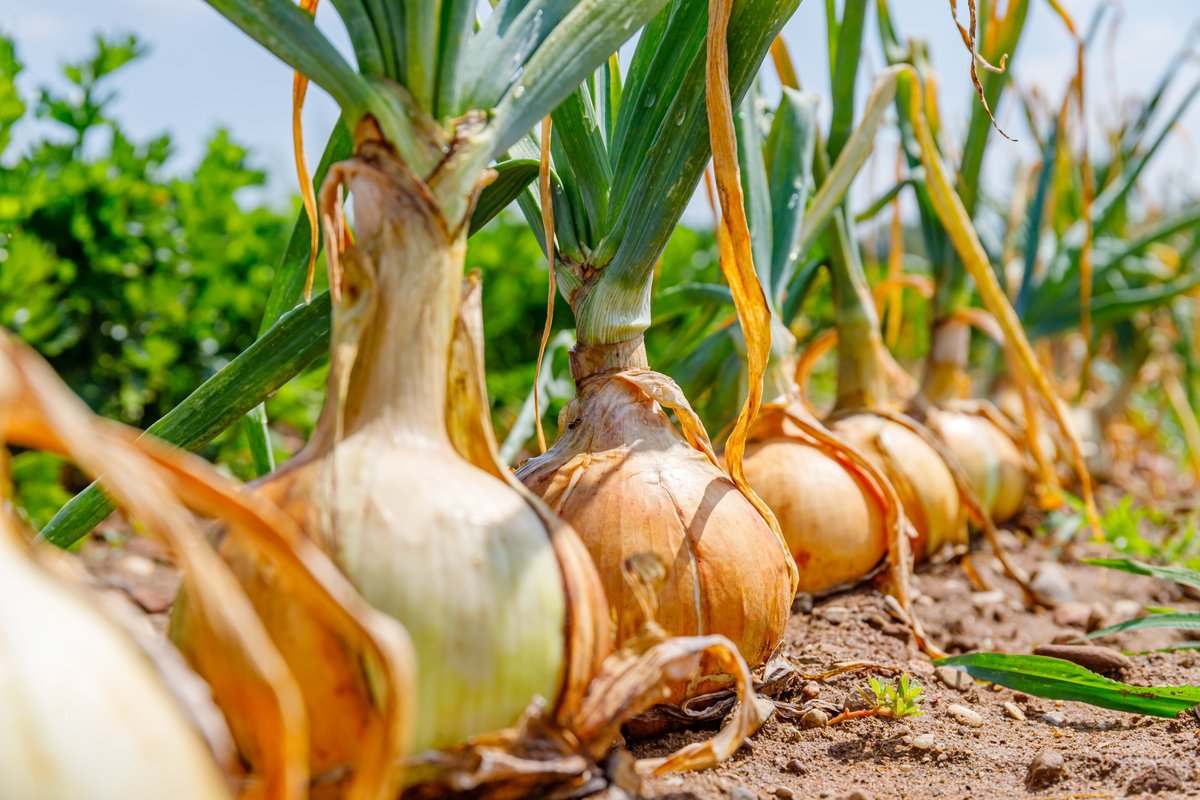Home>Types of Gardening>Edible Gardening>Best Fertilizer For Garlic
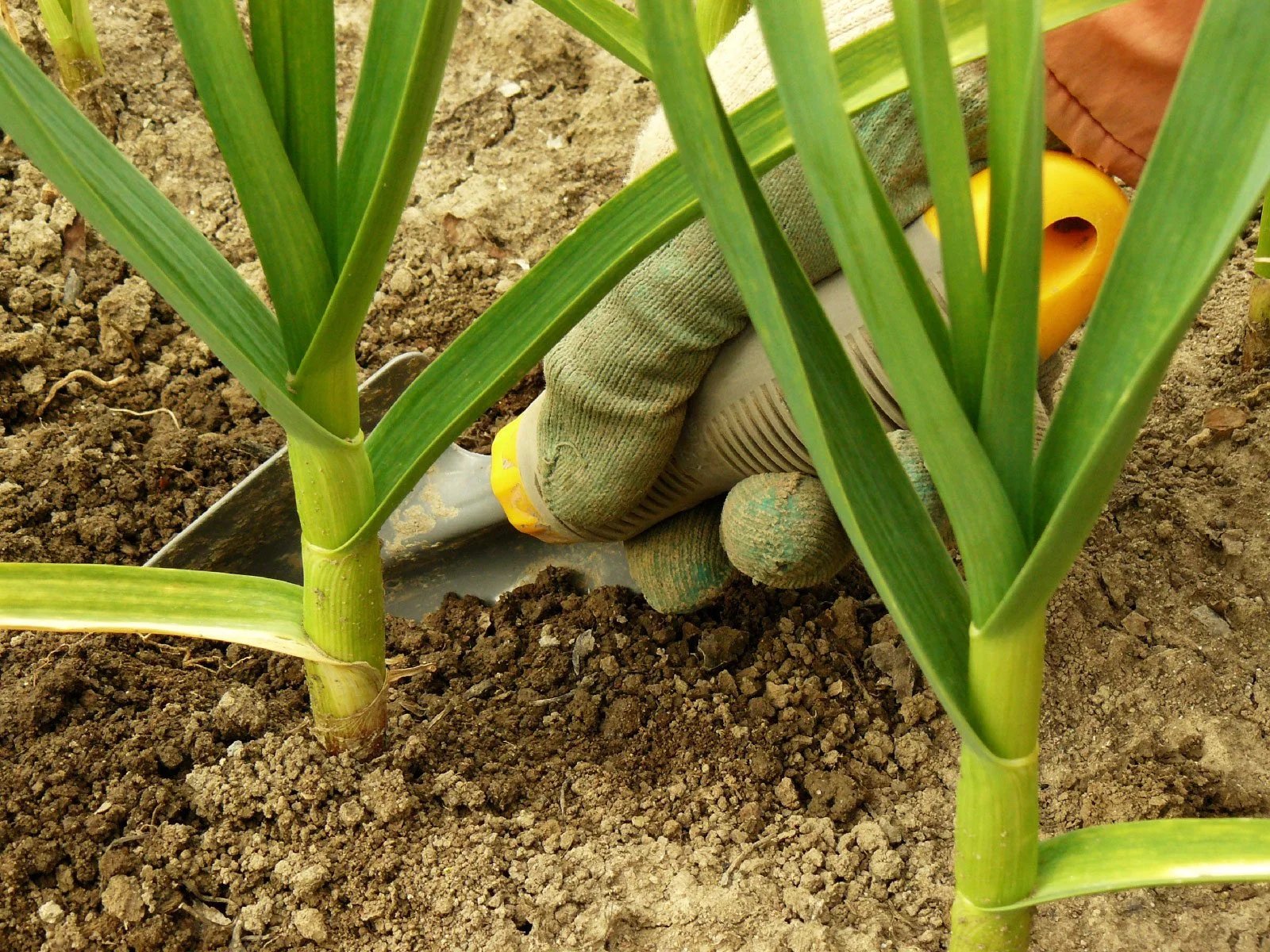

Edible Gardening
Best Fertilizer For Garlic
Modified: February 9, 2024
Looking to grow your own garlic? Discover the best fertilizer for garlic and other edible gardening tips to ensure a bountiful harvest.
(Many of the links in this article redirect to a specific reviewed product. Your purchase of these products through affiliate links helps to generate commission for Chicagolandgardening.com, at no extra cost. Learn more)
Table of Contents
- Introduction
- Importance of Fertilization for Garlic Growth
- Factors to Consider When Choosing Fertilizer for Garlic
- Organic Fertilizers for Garlic
- Inorganic Fertilizers for Garlic
- Best Fertilizer Options for Different Stages of Garlic Growth
- Application and Timing of Fertilizer for Garlic
- Precautions and Tips for Fertilizing Garlic
- Conclusion
Introduction
Growing garlic in your own edible garden can be a rewarding and fulfilling experience. Not only is garlic a versatile ingredient in cooking, but it also offers numerous health benefits. To ensure a successful garlic harvest, proper fertilization is essential. Choosing the right fertilizer and applying it at the appropriate time can greatly enhance garlic growth and yield.
Garlic is a heavy feeder, meaning it requires nutrient-rich soil to thrive. Fertilizing garlic not only provides the necessary nutrients but also improves soil structure and fertility. Additionally, a well-fed garlic plant is more resistant to pests and diseases, ensuring a healthier and more productive crop.
When it comes to selecting fertilizer for garlic, there are various options available, ranging from organic to inorganic choices. Each type has its own benefits and considerations, making it important to understand the specific needs of your garlic plants and the available options.
In this article, we will explore the importance of fertilization for garlic growth, factors to consider when choosing fertilizer, different types of organic and inorganic fertilizers, the best fertilizer options for different stages of garlic growth, application and timing tips, and general precautions to take when fertilizing garlic. By the end of this article, you will have a comprehensive understanding of how to best fertilize your garlic plants for optimal growth and a bountiful harvest.
Importance of Fertilization for Garlic Growth
Fertilization plays a crucial role in the growth and development of garlic plants. Garlic is a nutrient-hungry crop, and providing adequate fertilization ensures that it receives the necessary nutrients to thrive. Here are several reasons why fertilization is important for garlic growth:
- Improved plant growth: Fertilizers supply essential nutrients such as nitrogen (N), phosphorus (P), and potassium (K) that are vital for plant growth. Nitrogen promotes leafy growth, phosphorus stimulates root development, and potassium aids in overall plant health. By providing these nutrients in the right proportions, fertilization supports healthy garlic plant growth.
- Increased bulb size and yield: Proper fertilization can significantly boost the size and yield of garlic bulbs. Bulb formation and enlargement require a steady supply of nutrients throughout the growing season. Fertilizers provide the additional nutrients that may be lacking in the soil, ensuring optimal bulb development and maximizing yield.
- Enhanced flavor and nutritional value: Nutrient-rich soil translates to garlic bulbs with improved flavor and nutritional content. When garlic plants receive ample nutrients, they are better equipped to synthesize vitamins, minerals, and beneficial compounds, resulting in garlic bulbs that are not only delicious but also packed with health-promoting properties.
- Resistance to pests and diseases: Well-fertilized garlic plants are more resilient against pests and diseases. Adequate nutrition strengthens the plant’s immune system, making it less susceptible to attacks from pests and fungal diseases. A healthy and robust garlic plant is more likely to withstand potential threats and produce a successful harvest.
- Soil enrichment: Fertilization not only benefits garlic plants but also improves the quality of the soil. Organic matter in fertilizers enhances soil fertility, structure, and moisture-holding capacity. Over time, regular fertilization enriches the soil, creating a favorable environment for future crops.
Overall, proper fertilization is essential for healthy garlic growth, increased bulb size and yield, improved flavor and nutritional content, pest and disease resistance, and long-term soil enrichment. By understanding the importance of fertilization, you can ensure the optimal growth and productivity of your garlic plants.
Factors to Consider When Choosing Fertilizer for Garlic
Choosing the right fertilizer for garlic can greatly impact its growth and overall health. With so many options available, it’s important to consider several factors when selecting a fertilizer that meets the specific needs of your garlic plants. Here are key factors to keep in mind:
- Nutrient content: Check the nutrient content of the fertilizer, as indicated by the NPK ratio (nitrogen, phosphorus, and potassium). Garlic typically requires a fertilizer with a higher nitrogen content during the early growth stages for leafy development. As it progresses to bulb formation, phosphorus becomes more important. Potassium is crucial for overall plant health and disease resistance throughout the growth cycle. Look for a balanced NPK ratio or adjust the fertilizer application based on the specific stage of garlic growth.
- Fertilizer type: Consider whether you prefer organic or inorganic fertilizers. Organic fertilizers are derived from natural sources and release nutrients slowly, improving soil health over time. They are a sustainable and environmentally friendly choice but may have lower nutrient concentrations. Inorganic fertilizers, on the other hand, are synthetic and provide nutrients in a readily available form. They typically have higher nutrient concentrations and are faster-acting but may lack the long-term soil benefits of organic options.
- Soil composition: Assess the composition and fertility of your soil. Conduct a soil test to determine its pH level, nutrient content, and any deficiencies. This will help you choose a fertilizer that addresses your soil’s specific needs. For example, if your soil is acidic, you may need a fertilizer that also helps adjust the pH. Understanding your soil composition ensures that you provide the correct nutrients for garlic growth.
- Slow-release vs. fast-release: Consider the release rate of the fertilizer. Slow-release fertilizers gradually release nutrients over time, providing a steady and consistent supply to the plants. These are ideal for long-term growth and can reduce the risk of over-fertilization. Fast-release fertilizers release nutrients quickly and are beneficial for addressing immediate nutrient deficiencies or for quick growth spurts. However, they may require more frequent applications.
- Additional micronutrients: Pay attention to the presence of micronutrients in the fertilizer. While nitrogen, phosphorus, and potassium are primary macronutrients, garlic also requires trace amounts of micronutrients such as iron, manganese, and zinc. These micronutrients are essential for various metabolic processes and maintaining plant health. Look for fertilizers that contain these micronutrients, especially if your soil has deficiencies.
- Environmental impact: Consider the environmental impact of the fertilizer. Some fertilizers may contain harmful chemicals or contribute to water pollution. Look for environmentally friendly options, such as slow-release organic fertilizers or products that are labeled as being safe for the environment.
By considering these factors, you can choose a fertilizer that provides the necessary nutrients, suits your soil and environmental conditions, and supports the optimal growth and vigor of your garlic plants.
Organic Fertilizers for Garlic
Using organic fertilizers is a popular and eco-friendly approach to nourishing your garlic plants. Organic fertilizers are derived from natural sources such as plant matter, animal waste, and minerals. They offer numerous benefits, including improved soil health, slow-release nutrients, and reduced environmental impact. Here are some common organic fertilizers that can be used for garlic:
- Compost: Compost is a fantastic organic fertilizer that provides a rich source of nutrients and organic matter. It improves soil structure, enhances water retention, and promotes beneficial microbial activity. Apply compost to the soil before planting garlic and incorporate it into the top few inches. Composted manure or poultry litter can also be used, ensuring they are well-aged and have undergone proper composting to eliminate any health risks.
- Bone meal: Bone meal is a slow-release fertilizer high in phosphorus, an essential nutrient for bulb development. It is made from finely ground animal bones, which are rich in calcium and phosphorus. Incorporate bone meal into the soil when planting garlic to enhance root growth and encourage robust bulb development.
- Fish emulsion: Fish emulsion is a liquid organic fertilizer made from fermented fish parts. It is an excellent source of nitrogen and micronutrients. Dilute fish emulsion according to the package instructions and apply it as a foliar spray or incorporate it into the soil. This fertilizer provides a quick nutrient boost and stimulates vigorous leafy growth.
- Seaweed or kelp extract: Seaweed or kelp extract is derived from seaweed or kelp species and is rich in trace minerals, growth hormones, and other beneficial compounds. It enhances overall plant health, increases resistance to stress, and improves nutrient uptake. Use seaweed or kelp extract as a foliar spray or add it to the planting hole or soil surface.
- Blood meal: Blood meal is a high-nitrogen organic fertilizer made from dried animal blood. It is a fast-release nitrogen source that promotes lush foliage growth. Use blood meal sparingly, as excessive application can burn plants. Incorporate it into the soil before planting or side-dress the garlic plants during the early growth stages.
- Green manure cover crops: Green manure crops, such as clover, vetch, or alfalfa, can be grown and then cut down and incorporated into the soil as organic fertilizer. These cover crops add organic matter, fix nitrogen in the soil, and improve soil structure. Plant them in between garlic crops or during fallow periods to naturally enrich the soil.
When using organic fertilizers, it is important to follow the application instructions provided on the packaging. As organic fertilizers release nutrients slowly, they may require more frequent applications compared to synthetic fertilizers. Regularly monitor your garlic plants’ nutrient needs and adjust the feeding accordingly to ensure healthy growth and robust bulb formation.
Inorganic Fertilizers for Garlic
Inorganic fertilizers, also known as synthetic or chemical fertilizers, are another option to consider for fertilizing your garlic plants. These fertilizers are manufactured using chemical processes and provide a readily available source of nutrients. Here are some common inorganic fertilizers that can be used for garlic:
- Nitrogen-based fertilizers: Nitrogen is crucial for promoting vegetative growth in garlic. Inorganic fertilizers high in nitrogen, such as ammonium nitrate or urea, can be applied to support leafy development. However, it’s important to avoid excessive nitrogen application, as it can lead to lush foliage at the expense of bulb formation.
- Complete fertilizers: Complete fertilizers provide a balanced combination of nitrogen, phosphorus, and potassium, commonly referred to as NPK fertilizers. These fertilizers are labeled with three numbers that represent the percentage of each nutrient in the fertilizer. For example, a 10-10-10 fertilizer has equal parts of nitrogen, phosphorus, and potassium. Choose a complete fertilizer with ratios appropriate for the specific stage of garlic growth.
- Potassium-based fertilizers: Potassium is essential for overall plant health, root development, and disease resistance. Inorganic fertilizers containing potassium, such as potassium chloride or potassium sulfate, can be applied to your garlic plants. These fertilizers supply a quick source of potassium to support optimal growth and bulb development.
- Micro-nutrient fertilizers: Inorganic fertilizers often include trace elements and micronutrients necessary for garlic growth. These may include iron, manganese, zinc, copper, and boron. Check the fertilizer label for the presence of these micronutrients or use a specific micronutrient fertilizer if your soil test indicates deficiencies.
- Controlled-release fertilizers: Controlled-release or slow-release fertilizers are inorganic fertilizers that gradually release nutrients over an extended period. These types of fertilizers are beneficial for providing a steady supply of nutrients to your garlic plants without the risk of over-fertilization. Follow the instructions on the packaging for application rates and timing.
- Foliar fertilizers: In addition to soil applications, inorganic fertilizers can also be applied as foliar sprays. Foliar fertilizers are sprayed directly onto the leaves, allowing for quick absorption of nutrients. This method can provide a rapid nutrient boost and help address temporary nutrient deficiencies.
When using inorganic fertilizers, always follow the instructions provided by the manufacturer. Pay attention to the proper dosage, application methods, and frequency of application to avoid nutrient imbalances or the risk of over-fertilizing. Regularly monitor your garlic plants’ nutrient needs to determine when and how much fertilizer to apply, ensuring healthy growth and robust bulb formation.
Best Fertilizer Options for Different Stages of Garlic Growth
Garlic goes through different growth stages, each with its own nutritional requirements. By understanding these stages and choosing the appropriate fertilizer, you can optimize the growth and development of your garlic plants. Here are the best fertilizer options for each stage of garlic growth:
- Pre-planting: Before planting garlic cloves, it’s beneficial to prepare the soil with organic matter such as compost or well-rotted manure. These organic fertilizers enrich the soil with nutrients and improve its structure. Incorporate them into the soil to a depth of 6-8 inches to provide a nutrient-rich environment for the garlic roots.
- Early growth: During the early growth stage, garlic focuses on developing a strong leafy structure. Fertilizers with a higher nitrogen content, such as a balanced NPK fertilizer (e.g., 10-10-10), can be applied. This helps promote lush foliage growth. Follow the recommended application rate on the fertilizer packaging to prevent over-fertilization, which can lead to excessive vegetative growth at the expense of bulb formation.
- Bulb formation: As the garlic plants transition into bulb formation, a shift towards phosphorus and potassium becomes important. Phosphorus aids in root development and bulb formation, while potassium supports overall plant health, disease resistance, and bulb enlargement. A fertilizer with a higher phosphorus and potassium content, such as a 5-10-10 or 10-20-20 formulation, should be used. Apply it according to the recommended dosage, focusing on the soil around the base of the plants.
- Mature stage: As garlic plants reach maturity, it’s essential to maintain their health and ensure proper bulb development. Consider using a slow-release fertilizer or supplementing with organic fertilizers like seaweed or fish emulsion. These fertilizers provide a balanced nutrient supply and support the plant’s nutritional needs as it continues to ripen and prepare for harvest.
It’s important to note that these are general guidelines, and the specific fertilizer requirements may vary depending on your soil conditions and garlic variety. Regularly monitor your garlic plants for any signs of nutrient deficiencies or excesses, such as yellowing leaves or stunted growth, and adjust your fertilization practices accordingly.
Application and Timing of Fertilizer for Garlic
The application and timing of fertilizer for garlic are crucial aspects that can significantly impact its growth and development. Properly timed and applied fertilizers ensure that the garlic plants receive the necessary nutrients at the right stages of their growth. Here are some guidelines for the application and timing of fertilizer for garlic:
- Before planting: Prepare the soil by incorporating organic matter such as compost or well-rotted manure. This can be done a few weeks before planting to allow these fertilizers to break down and enrich the soil. Work the organic matter into the top 6-8 inches of soil to ensure the nutrients are evenly distributed.
- At planting: When planting garlic cloves, you can apply a slow-release fertilizer or a balanced organic fertilizer directly into the planting hole. This provides an initial nutrient boost as the roots expand and come into contact with the fertilizer. Follow the recommended dosage on the fertilizer packaging for best results.
- During early growth: Once the garlic plants have sprouted and entered the early growth stage, you can begin fertilizing with a nitrogen-rich fertilizer. This promotes leafy growth and strengthens the overall plant structure. Apply the fertilizer based on the manufacturer’s instructions, ensuring even distribution around the plants.
- During bulb formation: As the garlic plants transition into bulb formation, switch to a fertilizer with a higher phosphorus and potassium content. Apply this fertilizer around the base of the plants, focusing on the soil rather than directly on the leaves. This encourages root development, bulb enlargement, and overall plant health.
- Throughout the growing season: Consider supplementing with organic fertilizers such as seaweed or fish emulsion during the growing season. These can be applied as foliar sprays or added to the soil around the plants. Using these organic fertilizers every few weeks provides a steady supply of micronutrients and promotes overall plant vigor.
- Cease fertilization before harvest: It is important to stop fertilizing garlic a few weeks before harvest. This allows the plant to naturally mature and develop its flavor. Fertilizing too close to the harvest date may result in a stronger, pungent taste and can affect the shelf life of the bulbs.
Remember to always follow the instructions provided by the fertilizer manufacturer, as application rates and timing may vary depending on the specific product. Regularly monitor your garlic plants for any signs of nutrient deficiencies or excesses, and adjust your fertilization practices accordingly to ensure healthy and robust garlic growth.
Precautions and Tips for Fertilizing Garlic
Fertilizing garlic requires proper care and attention to ensure the best results. Here are some precautions and tips to keep in mind when fertilizing your garlic plants:
- Avoid over-fertilization: Garlic plants are sensitive to excess fertilizer, especially nitrogen. Applying too much fertilizer can lead to excessive leafy growth at the expense of bulb formation. Follow the recommended application rates and avoid overfeeding your garlic plants.
- Follow the fertilization schedule: Garlic has specific nutrient requirements at different stages of growth. It’s important to follow a fertilization schedule that aligns with these stages. Applying the right nutrients at the right time ensures optimal growth and development.
- Water after fertilizing: After applying fertilizer, ensure that you water the plants thoroughly. This helps to prevent fertilizer burn, which can occur when the fertilizer comes into direct contact with the plant tissues. Watering helps to dilute the fertilizer and distribute the nutrients evenly in the soil.
- Avoid foliar spraying during hot periods: If you choose to use foliar sprays as a method of fertilization, avoid spraying during hot periods of the day. High temperatures can cause the leaves to burn when they come into contact with the fertilizer. Opt for early morning or late evening when temperatures are cooler.
- Take precautions with synthetic fertilizers: If you opt for synthetic or chemical fertilizers, exercise caution when handling and applying them. Use protective gloves and follow the recommended safety guidelines provided by the manufacturer.
- Regularly monitor plant health: Keep an eye on the health of your garlic plants after fertilization. Look for any signs of nutrient deficiencies or excesses, such as yellowing or stunted growth. Adjust your fertilization practices accordingly to maintain a healthy balance of nutrients.
- Consider using organic fertilizers: Organic fertilizers are generally safer and more sustainable for both the environment and your garden. They release nutrients slowly, improve soil health, and reduce the risk of over-fertilization. Consider incorporating organic fertilizers into your fertilization routine.
- Store fertilizers properly: If you have leftover fertilizers, store them in a cool, dry, and well-ventilated area. Ensure that they are properly sealed to prevent moisture absorption or the escape of volatile components. This will maintain the efficacy and shelf life of the fertilizers.
- Conduct soil tests: Regularly test your soil to maintain its health and fertility. A soil test can help identify any nutrient deficiencies or imbalances, allowing you to adjust your fertilization practices accordingly.
By following these precautions and tips, you can ensure that your garlic plants receive the right amount and type of fertilizer, leading to healthy growth, robust bulbs, and a successful harvest.
Conclusion
Fertilizing your garlic plants is essential for their growth, health, and ultimately, the success of your harvest. By understanding the importance of fertilization, considering the factors when choosing fertilizer, and selecting the appropriate options for each stage of growth, you can provide the necessary nutrients and create an optimal environment for your garlic plants to thrive.
Organic fertilizers, such as compost, bone meal, fish emulsion, and seaweed extract, offer sustainable and environmentally friendly choices. They improve soil health, provide slow-release nutrients, and contribute to long-term soil fertility. Inorganic fertilizers, on the other hand, offer readily available nutrients and can be tailored to fit specific nutrient requirements at different stages of garlic growth.
It is important to follow the recommended application rates and timing, avoiding over-fertilization and providing balanced nutrition. Regularly monitor the health of your garlic plants and make adjustments as necessary to maintain optimal growth and prevent nutrient deficiencies or excesses.
Remember, each garden is unique, and the specific needs of your garlic plants may vary. Conduct soil tests to identify any nutrient deficiencies or imbalances, and adjust your fertilization practices accordingly. Additionally, handle and store fertilizers safely to promote a healthy and sustainable gardening environment.
With proper fertilization techniques in place, you can enjoy a bountiful harvest of healthy and flavorful garlic. From planting to harvesting, nurturing your garlic plants with the right nutrients will ensure their growth and development, while also enriching the overall health of your garden soil.

